Main Study Tracks Outline
Innovya University Core Studies
In the context of a university where every student is defined as a Ph.D. and an entrepreneur from the first year of study, learning would yield several significant outcomes:
water technology
1. Advanced Research: Students would engage in cutting-edge research within the field of water technology, exploring innovative solutions to address global water challenges such as scarcity, pollution, and access. Their Ph.D. studies would contribute to the advancement of knowledge in this critical area, leading to breakthroughs in water treatment, conservation, and management.
2. Entrepreneurial Ventures: Armed with a deep understanding of water technology and its applications, students would have the opportunity to launch entrepreneurial ventures aimed at commercializing new technologies, products, or services related to water management and sustainability. These ventures could range from startups focused on developing novel water purification systems to consulting firms offering innovative solutions for water resource management.
3. Social Impact: Students would leverage their expertise in water technology to create positive social impact by addressing pressing environmental and public health challenges related to water. Their entrepreneurial endeavors could lead to the implementation of sustainable water solutions in underserved communities, improving access to clean water and sanitation and promoting environmental stewardship.
4. Collaborative Partnerships: Collaboration would be a cornerstone of learning in water technology faculty, with students working alongside industry partners, government agencies, non-profit organizations, and academic institutions to tackle complex water-related issues. These collaborative efforts would foster interdisciplinary approaches to problem-solving and promote knowledge exchange and innovation.
5. Policy Influence: Students would play a role in shaping water policy and governance through their research findings, entrepreneurial initiatives, and advocacy efforts. By generating evidence-based insights and innovative solutions, they could inform decision-making processes at local, national, and international levels, contributing to more effective and sustainable water management practices.
Overall, the outcome of learning water technology in Innovya university would be multifaceted, encompassing academic excellence, entrepreneurial success, social impact, collaborative innovation, and policy influence in the field of water sustainability and resilience.
Multimedia

1. Advanced Research: Students would conduct groundbreaking research in multimedia, exploring emerging technologies, design principles, and applications across various domains such as digital media production, interactive storytelling, virtual reality, and augmented reality. Their Ph.D. studies would contribute to advancing the theoretical foundations and practical innovations in multimedia.
2. Entrepreneurial Ventures: Equipped with expertise in multimedia technologies and design, students would have the opportunity to launch entrepreneurial ventures in the creative industries. They could start their own multimedia production studios, develop innovative digital media platforms or apps, or offer specialized services in areas such as animation, graphic design, video production, and user experience design.
3. Creative Expression: Learning multimedia would empower students to express their creativity and storytelling abilities through diverse digital mediums. They would learn to harness the power of multimedia to communicate ideas, evoke emotions, and engage audiences across different platforms, from websites and mobile apps to virtual environments and interactive installations.
4. Innovative Solutions: Students would leverage multimedia technologies to address complex challenges and opportunities in various fields, including education, healthcare, entertainment, marketing, and journalism. They could develop immersive learning experiences, healthcare simulations, gamified applications, interactive artworks, and data-driven visualizations to solve real-world problems and create engaging experiences.
5. Collaborative Projects: Collaboration would be central to learning multimedia, with students working together in multidisciplinary teams to create multimedia projects that integrate technology, design, and content. These collaborative efforts would foster interdisciplinary collaboration, creative synergy, and the exchange of ideas and expertise across different disciplines.
6. Industry Partnerships: Students would collaborate with industry partners, creative professionals, and technology companies to gain real-world experience, access resources, and explore internship and job opportunities in the multimedia industry. These partnerships would provide students with hands-on experience, mentorship, and networking opportunities to launch their careers as multimedia professionals and entrepreneurs.
Overall, learning multimedia would empower students to become leaders and innovators in the rapidly evolving field of digital media, equipped with the skills, knowledge, and entrepreneurial mindset to thrive in a dynamic and competitive creative landscape.
Medical School
1. Cutting-edge Research: Students would engage in pioneering research at the forefront of medical science, exploring novel treatments, diagnostics, and technologies to advance healthcare. Their Ph.D. studies would contribute to breakthrough discoveries in areas such as molecular biology, genetics, immunology, neuroscience, and regenerative medicine, driving innovation and improving patient outcomes.

2. Entrepreneurial Ventures: Armed with a deep understanding of medical science and clinical practice, students would have the opportunity to launch entrepreneurial ventures aimed at developing innovative healthcare solutions. They could start biotechnology companies, medical device startups, digital health platforms, or healthcare consulting firms, leveraging their expertise to address unmet medical needs and improve healthcare delivery.
3. Patient-centered Care: Learning in medical school would emphasize the importance of patient-centered care, empathy, and interdisciplinary collaboration. Students would develop clinical skills, critical thinking abilities, and ethical decision-making capabilities to provide compassionate, evidence-based care to individuals and communities, prioritizing patient safety, well-being, and dignity.
4. Global Health Impact: Students would be equipped to address global health challenges and disparities through research, advocacy, and service. They could collaborate with international organizations, non-governmental organizations (NGOs), and public health agencies to develop and implement sustainable healthcare interventions, promote health equity, and strengthen healthcare systems worldwide.
5. Interdisciplinary Collaboration: Collaboration would be integral to learning in medical school, with students working alongside healthcare professionals, researchers, engineers, entrepreneurs, and policymakers to tackle complex healthcare issues. These collaborative efforts would foster interdisciplinary approaches to problem-solving, promote innovation, and drive transformative change in healthcare delivery and public health.
6. Technology Integration: Students would learn to harness the power of technology to enhance patient care, medical education, and healthcare delivery. They would explore emerging technologies such as telemedicine, artificial intelligence, wearable devices, and precision medicine tools, leveraging these innovations to improve diagnosis, treatment, monitoring, and prevention of diseases.
7. Healthcare Leadership: Learning in medical school would cultivate future healthcare leaders who are equipped to drive positive change and innovation in healthcare organizations, academic institutions, government agencies, and policy-making bodies. Students would develop leadership skills, strategic thinking abilities, and a commitment to lifelong learning and continuous improvement in healthcare leadership roles.
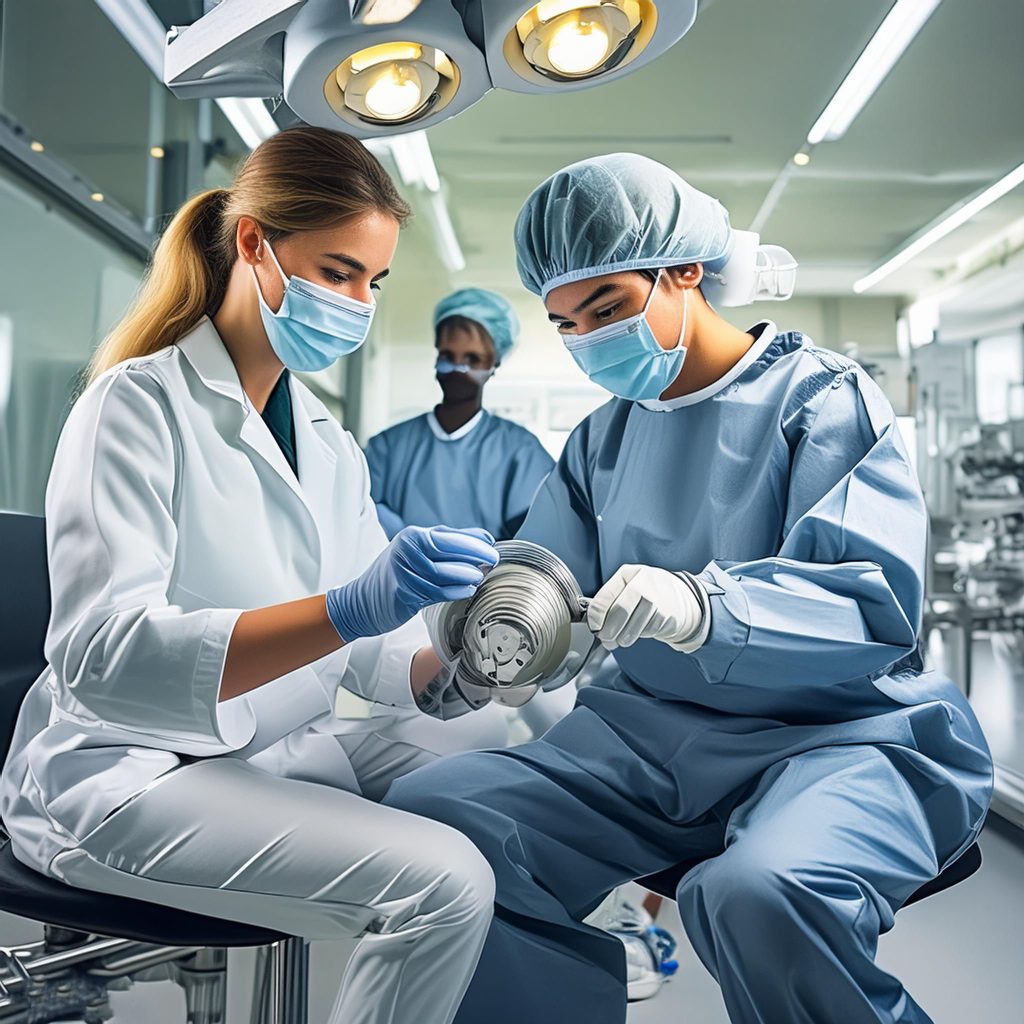
How the COVID-19 Vaccine Paved the Way for a Cancer Vaccine
The COVID-19 vaccine, despite its controversies and multiple doses, has inadvertently propelled humanity towards a groundbreaking achievement: the development of a cancer vaccine. And, as with many advancements in this field, artificial intelligence (AI) plays a crucial role.
While the world grapples with emerging diseases like West Nile Virus, resurgent COVID-19 cases, and the alarming spread of flesh-eating bacteria in Japan, experts warn of a looming health crisis. The World Health Organization (WHO) advisor attributes this surge in infectious diseases to climate change, which fosters drug-resistant strains and exacerbates existing health vulnerabilities.
Furthermore, the concept of “immunity debt,” resulting from reduced exposure to pathogens during pandemic lockdowns, has weakened our immune systems, making us more susceptible to infections.
The COVID-19 mRNA vaccine, a first of its kind, revolutionized vaccine technology. Instead of directly targeting the virus, it introduces a small genetic code into our cells, instructing them to produce antibodies against the virus. This groundbreaking approach opened doors to a new era of vaccines capable of tackling a wider range of diseases.
And now, that door seems to be swinging wide open. The British health organization has developed the world’s first cancer vaccine based on mRNA technology. This groundbreaking treatment, administered to its first patient in England last week, aims to trigger an immune response that prevents cancer recurrence after tumor removal. By training the body to recognize and destroy cancerous cells, this vaccine holds immense potential for treating various cancers, including colorectal, skin, pancreatic, and kidney cancers.
Observing these advancements is Sam Altman, CEO of OpenAI, who recently announced a collaboration with a medical startup. This partnership provides oncologists with a real-time dashboard containing comprehensive medical data on patients with specific cancer types. The dashboard analyzes blood tests, medical history, and other parameters to offer personalized treatment recommendations.
This example highlights the transformative power of AI in healthcare. From drug discovery and personalized medicine to disease prediction and treatment optimization, AI offers a plethora of benefits, ultimately contributing to the betterment of humanity.
Shared Wisdom from Innovya University

The COVID-19 pandemic, while undeniably a global crisis, has inadvertently catalyzed a remarkable advancement in medical science: the development of a cancer vaccine. This breakthrough, fueled by the innovative mRNA technology employed in the COVID-19 vaccine, represents a beacon of hope in the fight against cancer.
The mRNA Revolution:

The COVID-19 mRNA vaccine marked a paradigm shift in vaccine development. Unlike traditional vaccines that introduce weakened or inactive viruses, mRNA vaccines deliver genetic instructions to our cells, enabling them to produce antibodies against the target virus. This groundbreaking approach, proven effective against COVID-19, has opened doors to a new era of vaccines capable of tackling a wider range of diseases, including cancer.
A New Weapon Against Cancer:
Building on the success of mRNA technology, the British health organization has developed the world’s first cancer vaccine based on this revolutionary platform. This groundbreaking treatment aims to prevent cancer recurrence after tumor removal by training the immune system to recognize and destroy cancerous cells.
The Power of AI in Healthcare:
The fight against cancer is further bolstered by the integration of artificial intelligence (AI). OpenAI, a leading AI research company, has partnered with a medical startup to develop a real-time dashboard that provides oncologists with comprehensive patient data, enabling them to make more informed treatment decisions.
Shared Wisdom Takeaways:
- Innovation often arises from unexpected sources: The COVID-19 pandemic, while devastating, has spurred remarkable advancements in medical science, including the development of a promising cancer vaccine.
- Collaboration is key to progress: The success of the cancer vaccine and AI-powered healthcare solutions highlights the importance of collaboration between researchers, healthcare professionals, and technology companies.
- Technology has the power to transform healthcare: AI and mRNA technology are revolutionizing the way we diagnose, treat, and prevent diseases, offering hope for a healthier future.
Innovya University encourages its community to embrace innovation, foster collaboration, and harness the power of technology to create a brighter future for all.
Overall, learning in medical school would empower students to become transformative leaders, innovators, and entrepreneurs in healthcare, driving advances in medical science, improving patient care, and addressing global health challenges with creativity, compassion, and integrity.
UAV and aviation
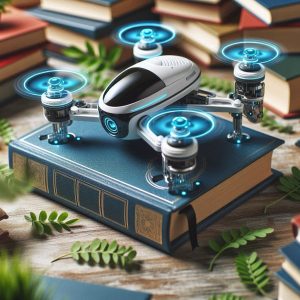
1. Cutting-edge Research: Students would engage in groundbreaking research in aviation and UAV technology, exploring advancements in aerodynamics, propulsion systems, materials science, autonomous navigation, and mission planning. Their Ph.D. studies would contribute to the development of next-generation aircraft and UAVs, driving innovation and shaping the future of aerospace engineering.
2. Entrepreneurial Ventures: Armed with expertise in aviation and UAV technology, students would have the opportunity to launch entrepreneurial ventures in the aerospace industry. They could start companies specializing in drone manufacturing, aerial imaging services, aviation software development, or aerial transportation solutions, leveraging their knowledge to create innovative products and services that meet the evolving needs of the market.
3. Industry Leadership: Learning in aviation and UAVs would prepare students to assume leadership roles in the aerospace industry, academia, and government agencies. They would develop technical expertise, management skills, and strategic vision to drive innovation, lead research and development initiatives, and shape industry standards and regulations in aviation and unmanned systems.
4. Safety and Regulation: Students would learn about aviation safety principles, regulatory frameworks, and risk management practices essential for the safe operation of aircraft and UAVs. They would study aviation laws, airspace regulations, and industry best practices to ensure compliance and promote safety in aviation operations, emphasizing the importance of ethical conduct and responsible stewardship of airspace resources.
5. Multidisciplinary Collaboration: Collaboration would be central to learning in aviation and UAVs, with students working alongside engineers, scientists, pilots, air traffic controllers, policymakers, and industry stakeholders to address complex challenges in aerospace technology and operations. These collaborative efforts would foster interdisciplinary approaches to problem-solving and promote innovation in aviation and UAV applications.
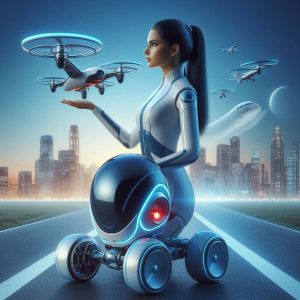
6. Real-world Applications: Students would have opportunities to apply their knowledge and skills in real-world applications of aviation and UAV technology, such as aerial surveying, precision agriculture, environmental monitoring, disaster response, search and rescue missions, and commercial drone delivery services. These practical experiences would provide students with hands-on training and insights into the diverse applications of aerospace technology.
7. Global Impact: Learning in aviation and UAVs faculty would enable students to address global challenges such as climate change, transportation efficiency, emergency response, and humanitarian aid through the use of aerial technologies. They could collaborate with international organizations, government agencies, and non-profit organizations to deploy UAVs for disaster relief, environmental monitoring, and public health initiatives, making a positive impact on society and the environment.
Overall, learning in Aviation and UAVs faculty, would empower students to become visionary leaders, innovators, and entrepreneurs in the aerospace industry, driving advancements in technology, safety, and sustainability and shaping the future of aviation and unmanned systems on a global scale.
Robotics
1. Cutting-edge Research: Students would engage in pioneering research in robotics and humanoid robots, exploring advanced robotics technologies, artificial intelligence, machine learning, human-robot interaction, and biomechanics. Their Ph.D. studies would contribute to the development of next-generation robotic systems, humanoid robots, and intelligent automation solutions for various applications in industry, healthcare, education, entertainment, and beyond.
2. Entrepreneurial Ventures: Armed with expertise in robotics, students would have the opportunity to launch entrepreneurial ventures in the robotics industry. They could start robotics companies specializing in humanoid robot development, robotics software and hardware, robotic automation solutions, or robotics services such as robotic maintenance, repair, and customization. These ventures would leverage cutting-edge robotics technologies to create innovative products and services that address emerging market needs and challenges.
3. Innovative Applications: Learning in robotics faculty would enable students to explore innovative applications of robotics and humanoid robots across diverse domains. They could develop assistive robots for healthcare and rehabilitation, collaborative robots (cobots) for manufacturing and logistics, educational robots for STEM education, social robots for companionship and therapy, and entertainment robots for interactive experiences and immersive storytelling.
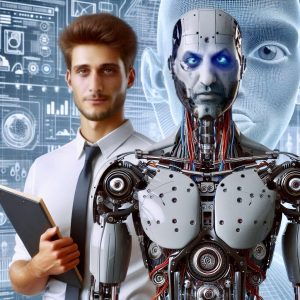
4. Ethical and Social Impact: Students would grapple with ethical, legal, and societal implications of robotics and humanoid robots, considering issues such as privacy, autonomy, job displacement, inequality, and human-robot interaction ethics. They would study interdisciplinary perspectives on robotics ethics, engage in critical dialogue, and develop responsible approaches to robotics design, deployment, and governance that prioritize human well-being, safety, and inclusivity.
5. Interdisciplinary Collaboration: Collaboration would be central to learning in robotics faculty, with students working alongside engineers, computer scientists, cognitive scientists, psychologists, designers, ethicists, and other stakeholders to address complex challenges in robotics research, development, and deployment. These interdisciplinary collaborations would foster creative synergy, diverse perspectives, and holistic approaches to robotics innovation and application.
6. Real-world Impact: Students would have opportunities to apply their robotics knowledge and skills to real-world problems and challenges, collaborating with industry partners, research institutions, and community organizations on applied robotics projects. They could develop robotic solutions for disaster response, environmental monitoring, agricultural automation, eldercare, special needs assistance, and other societal needs, making a tangible impact on communities and society.
7. Global Collaboration: Learning in robotics faculty would enable students to engage in global collaboration and knowledge exchange, working with international partners, participating in robotics competitions and conferences, and contributing to international research initiatives and standards development. They could collaborate with researchers, engineers, and entrepreneurs from around the world to advance robotics technology, promote cross-cultural understanding, and address global challenges through robotics innovation and collaboration.
Smart Agriculture
learning alternative agriculture would result in transformative outcomes in sustainable food production, environmental stewardship, research, entrepreneurship, and community development:
1. Cutting-edge Research: Students would engage in pioneering research in alternative agriculture, exploring innovative farming practices, agroecological principles, and sustainable food systems. Their Ph.D. studies would contribute to the development of novel cultivation methods, crop varieties, and agricultural technologies aimed at enhancing productivity, resilience, and environmental sustainability in agriculture.
2. Entrepreneurial Ventures: Armed with expertise in alternative agriculture, students would have the opportunity to launch entrepreneurial ventures in the agri-food sector. They could start organic farms, urban agriculture initiatives, vertical farming startups, sustainable food businesses, or agritech companies, leveraging their knowledge to create innovative products and services that promote healthy, locally sourced, and environmentally friendly food production.
3. Community Engagement: Learning in alternative agriculture school would emphasize community-based approaches to food production, emphasizing collaboration, social responsibility, and equitable access to nutritious food. Students would work with local communities, farmers, food producers, and policymakers to develop sustainable agriculture initiatives, community gardens, farmers’ markets, and food cooperatives that strengthen food security, promote public health, and support local economies.
4. Regenerative Practices: Students would learn about regenerative agriculture principles and practices aimed at restoring soil health, enhancing biodiversity, and mitigating climate change impacts. They would study agroforestry, permaculture, soil conservation techniques, and organic farming methods to promote ecological resilience, carbon sequestration, and sustainable land management practices in agriculture.
5. Technology Integration: Students would explore the integration of technology and innovation in alternative agriculture, including precision farming technologies, smart irrigation systems, remote sensing, and data analytics. They would leverage digital tools and agritech solutions to optimize resource use, monitor crop health, and improve farm productivity while minimizing environmental impact and resource depletion.
6. Policy Advocacy: Learning in alternative agriculture school would empower students to advocate for policies and regulations that support sustainable agriculture, biodiversity conservation, and food sovereignty. They would engage in policy analysis, advocacy campaigns, and stakeholder outreach to promote sustainable farming practices, agroecological education, and equitable access to land, water, and resources for small-scale farmers and marginalized communities.
7. Global Impact: Students would address global food security and sustainability challenges through research, innovation, and international collaboration. They could collaborate with global organizations, NGOs, and research institutions to develop sustainable agriculture projects, capacity-building initiatives, and technology transfer programs aimed at improving agricultural productivity, livelihoods, and resilience in developing countries.
Overall, learning in Smart Agriculture school empower students to become visionary leaders, innovators, and change-makers in the global food system, driving advancements in sustainable agriculture, environmental conservation, and social equity while addressing pressing challenges such as climate change, food insecurity, and rural development.
Alternative Transportation
learning alternative transportation across air, land, and sea would lead to transformative outcomes in transportation innovation, research, entrepreneurship, and sustainability:
1. Cutting-edge Research: Students would engage in pioneering research in alternative transportation technologies and systems, exploring innovations in electric vehicles, autonomous vehicles, drones, hyperloop, high-speed rail, hydrogen fuel cells, sustainable aviation, marine propulsion, and other emerging transportation solutions. Their Ph.D. studies would contribute to advancing knowledge and technological advancements in transportation engineering, sustainability, and policy.
2. Entrepreneurial Ventures: Armed with expertise in alternative transportation, students would have the opportunity to launch entrepreneurial ventures in the transportation industry. They could start companies specializing in electric vehicle manufacturing, drone delivery services, autonomous vehicle technology, sustainable aviation solutions, marine transportation innovations, or transportation logistics and infrastructure development. These ventures would leverage cutting-edge technologies and sustainable practices to disrupt traditional transportation models and create new market opportunities.
3. Sustainable Mobility: Learning in the Alternative Transportation faculty would emphasize sustainability, environmental stewardship, and climate resilience in transportation systems and operations. Students would study renewable energy sources, energy-efficient technologies, carbon-neutral fuels, and low-emission propulsion systems to promote sustainable mobility solutions that reduce greenhouse gas emissions, air pollution, and reliance on fossil fuels.
4. Intermodal Connectivity: Students would explore integrated transportation systems and intermodal connectivity, considering multimodal solutions that seamlessly connect air, land, and sea transportation modes. They would study concepts such as mobility as a service (MaaS), shared mobility, last-mile solutions, and smart transportation networks to optimize transportation efficiency, accessibility, and convenience for passengers and freight.
5. Smart Infrastructure: Learning in alternative transportation faculty would involve designing and developing smart infrastructure solutions to support emerging transportation technologies and services. Students would explore concepts such as connected vehicles, intelligent transportation systems (ITS), vehicle-to-everything (V2X) communication, and smart cities integration to enhance transportation safety, efficiency, and sustainability through data-driven insights and automation.
6. Policy and Regulation: Students would grapple with policy and regulatory challenges in alternative transportation, considering issues such as safety standards, privacy concerns, liability, insurance, licensing, and public acceptance of new transportation technologies and services. They would study transportation policy frameworks, regulatory regimes, and governance models to develop informed strategies for navigating the legal and regulatory landscape of alternative transportation.
7. Community Engagement: Learning in alternative transportation faculty would involve engaging with communities, stakeholders, and policymakers to address transportation equity, accessibility, and social inclusion. Students would work with local governments, advocacy groups, and community organizations to develop transportation solutions that prioritize the needs of underserved communities, improve access to transportation services, and promote equitable transportation opportunities for all.
Overall, learning alternative transportation would empower students to become visionary leaders, innovators, and change-makers in the transportation industry, driving advancements in technology, sustainability, and mobility while addressing pressing challenges such as climate change, urban congestion, and transportation inequality.
Artificial Intelligence and Cyber Technology
learning Artificial Intelligence (AI) and cyber technology would lead to transformative outcomes in technology innovation, research, entrepreneurship, and cybersecurity:
1. Cutting-edge Research: Students would engage in pioneering research in artificial intelligence and cyber technology, exploring advancements in machine learning, deep learning, natural language processing, computer vision, cybersecurity, cryptography, and blockchain. Their Ph.D. studies would contribute to advancing the theoretical foundations and practical applications of AI and cyber technology, driving innovation, and shaping the future of digital transformation.
2. Entrepreneurial Ventures: Armed with expertise in AI and cyber technology, students would have the opportunity to launch entrepreneurial ventures in the technology sector. They could start companies specializing in AI software development, cybersecurity solutions, data analytics platforms, blockchain technologies, or digital privacy services, leveraging their knowledge to create innovative products and services that address emerging market needs and challenges.
3. Ethical AI and Cybersecurity: Learning in AI and cyber technology faculties would emphasize ethical considerations, responsible AI development, and cybersecurity best practices. Students would study ethical frameworks, algorithmic fairness, privacy preservation, and data protection principles to ensure that AI systems and cyber technologies are developed and deployed in a manner that respects individual rights, societal values, and ethical standards.
4. Cyber Defense: Students would learn about cybersecurity threats, vulnerabilities, and attack vectors, as well as defensive strategies, incident response, and risk management practices. They would study cybersecurity frameworks, penetration testing methodologies, threat intelligence, and security protocols to defend against cyber threats and safeguard critical infrastructure, networks, and data assets from malicious actors.
5. AI Applications: Students would explore a wide range of AI applications across industries and domains, including healthcare, finance, transportation, education, cybersecurity, and defense. They would develop AI-powered solutions for tasks such as medical diagnosis, financial forecasting, autonomous vehicles, personalized learning, fraud detection, threat detection, and anomaly detection, driving innovation and efficiency in various sectors.
6. Interdisciplinary Collaboration: Collaboration would be central to learning in AI and cyber technology faculties, with students working alongside computer scientists, engineers, mathematicians, social scientists, policymakers, and industry experts to address complex challenges in AI development, cybersecurity, and technology governance. These interdisciplinary collaborations would foster creative synergy, diverse perspectives, and holistic approaches to technology innovation and application.
7. Policy Advocacy: Students would engage in policy analysis, advocacy campaigns, and stakeholder outreach to shape AI and cybersecurity policy and regulation. They would collaborate with government agencies, industry associations, civil society organizations, and international bodies to develop informed policies, standards, and guidelines that promote innovation, protect privacy, and enhance cybersecurity resilience in the digital age.
Overall, learning AI and cyber technology would empower students to become visionary leaders, innovators, and stewards of technology, driving advancements in artificial intelligence, cybersecurity, and digital transformation while addressing societal challenges and promoting ethical, responsible, and inclusive development of AI and cyber technologies.
Desert Agriculture.
learning in Desert and Urban Agriculture faculty would lead to transformative outcomes in sustainable food production, environmental resilience, research, entrepreneurship, and community development:
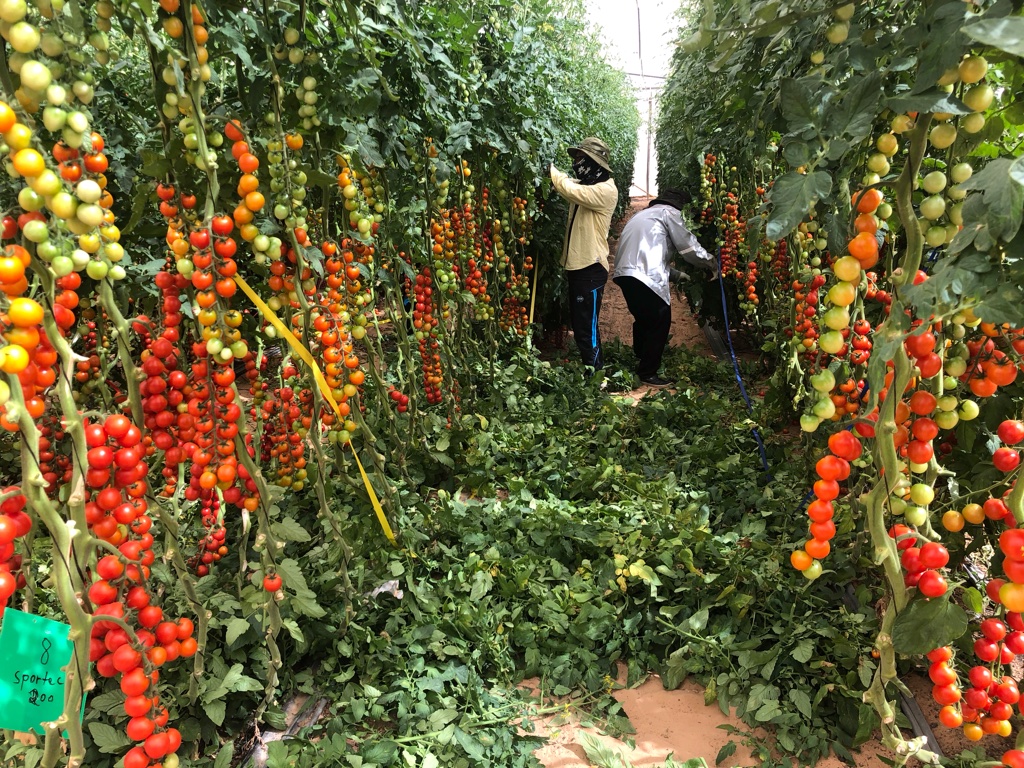
1. Cutting-edge Research: Students would engage in innovative research in desert and urban agriculture, exploring sustainable farming practices, water-efficient irrigation systems, climate-resilient crops, vertical farming, hydroponics, aquaponics, and rooftop gardening. Their Ph.D. studies would contribute to advancing knowledge and technological solutions for food production in arid regions and urban environments, driving innovation and sustainability in agriculture.
2. Entrepreneurial Ventures: Armed with expertise in desert and urban agriculture, students would have the opportunity to launch entrepreneurial ventures in the agri-food sector. They could start companies specializing in urban farming solutions, indoor agriculture technologies, desert farming innovations, sustainable food startups, or agricultural consulting services, leveraging their knowledge to create resilient and resource-efficient food systems that address urbanization, water scarcity, and climate change challenges.
3. Resource Efficiency: Learning in desert and urban agriculture faculty would emphasize resource efficiency, water conservation, and sustainable land use practices. Students would study techniques for soil management, water harvesting, drip irrigation, and nutrient recycling to optimize resource use and minimize environmental impact in agricultural production, promoting resilience and sustainability in water-stressed and urbanized environments.

4. Local Food Systems: Students would explore the development of local food systems and community-supported agriculture (CSA) initiatives that promote food security, health, and economic resilience in urban areas. They would collaborate with local farmers, food producers, chefs, policymakers, and community organizations to create sustainable food networks, farmers’ markets, community gardens, and food hubs that connect urban residents with fresh, locally grown produce and support small-scale farmers and producers.
5. Climate Adaptation: Learning in desert and urban agriculture faculty would involve studying climate adaptation strategies for agriculture, including crop diversification, agroforestry, soil conservation, and integrated pest management. Students would develop resilience-building measures to mitigate the impacts of climate change, extreme weather events, and environmental degradation on agricultural productivity and food security, promoting adaptive and sustainable farming practices in challenging environments.
6. Education and Outreach: Students would engage in education and outreach initiatives to raise awareness about desert and urban agriculture, promote sustainable food consumption habits, and empower communities to participate in local food production and food sovereignty initiatives. They would develop educational programs, workshops, and outreach events that inspire interest in agriculture, foster gardening skills, and promote environmental stewardship among urban residents and youth.
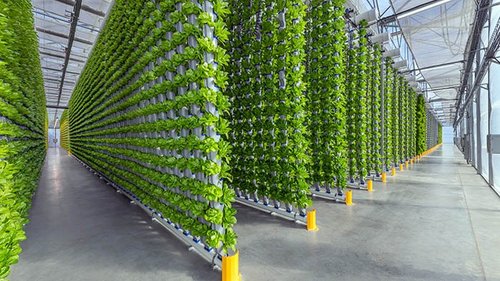
7. Policy Advocacy: Students would advocate for policies and regulations that support sustainable agriculture, urban farming, and food justice. They would collaborate with policymakers, advocacy groups, and grassroots organizations to develop policy recommendations, zoning ordinances, and incentive programs that promote urban agriculture, protect agricultural land, and ensure equitable access to healthy, affordable food in urban areas.
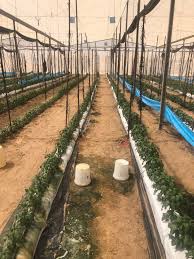
Overall, learning Desert and Urban Agriculture in such a university would empower students to become visionary leaders, innovators, and advocates for sustainable food systems, driving advancements in agriculture, environmental resilience, and community well-being while addressing pressing challenges such as urbanization, water scarcity, and climate change.
Aging research and nursing
learning Human Aging Research and Nursing would lead to transformative outcomes in healthcare innovation, research, entrepreneurship, and gerontological care:
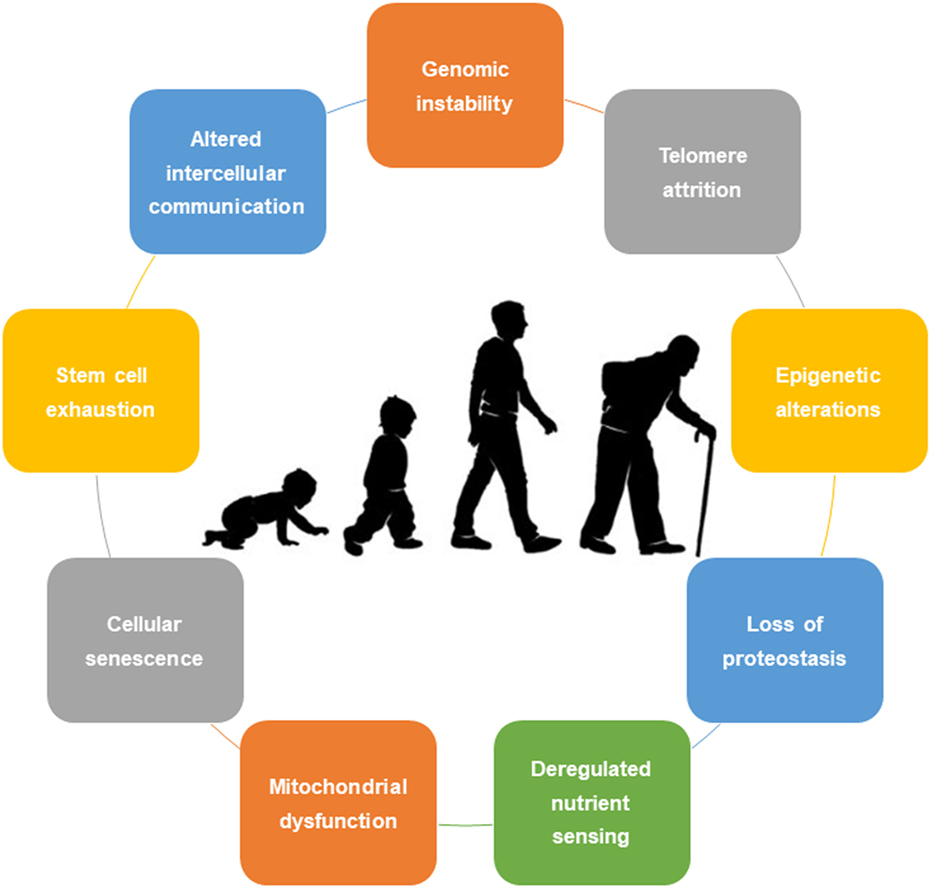
1. Cutting-edge Research: Students would engage in groundbreaking research in human aging, exploring the biological, psychological, social, and environmental factors that influence the aging process and health outcomes in older adults. Their Ph.D. studies would contribute to advancing knowledge and evidence-based interventions for healthy aging, longevity, and age-related diseases, driving innovation in gerontological research and healthcare.

2. Entrepreneurial Ventures: Armed with expertise in human aging research and nursing, students would have the opportunity to launch entrepreneurial ventures in the healthcare sector. They could start companies specializing in aging-in-place solutions, home healthcare services, assistive technologies for older adults, telemedicine platforms, or geriatric care management services, leveraging their knowledge to create innovative products and services that improve quality of life and healthcare outcomes for older adults.
3. Geriatric Nursing: Learning in nursing school would prepare students to provide compassionate, evidence-based care to older adults across the continuum of care settings, including hospitals, long-term care facilities, home care, and community-based programs. They would develop clinical skills, specialized knowledge, and holistic approaches to geriatric nursing practice, focusing on promoting health, independence, and dignity in older adults while addressing their unique physical, cognitive, emotional, and social needs.
4. Interdisciplinary Collaboration: Collaboration would be central to learning in human aging research faculty and nursing, with students working alongside healthcare professionals, researchers, policymakers, educators, and community organizations to address complex challenges in aging and healthcare. They would engage in interdisciplinary research projects, clinical rotations, and community outreach initiatives that promote collaboration, innovation, and holistic care for older adults.
5. Technology Integration: Students would explore the integration of technology and innovation in aging research and nursing practice, including digital health tools, remote monitoring devices, telehealth platforms, smart home technologies, and wearable sensors. They would learn to leverage technology to enhance assessment, monitoring, communication, and care coordination for older adults, promoting independence, safety, and quality of life in aging populations.
6. Health Promotion and Prevention: Learning in human aging research and nursing school would emphasize health promotion, disease prevention, and wellness strategies for older adults. Students would develop expertise in geriatric assessment, health coaching, fall prevention, medication management, nutrition counseling, and chronic disease management, empowering older adults to maintain optimal health and well-being as they age.
7. Policy Advocacy: Students would advocate for policies and programs that support healthy aging, age-friendly communities, and access to high-quality healthcare services for older adults. They would collaborate with policymakers, advocacy groups, and aging organizations to develop age-friendly policies, improve access to healthcare, long-term care, and social services, and address disparities in health and healthcare outcomes among older adults.

Overall, learning Human Aging Research and Nursing would empower students to become leaders, innovators, and advocates for healthy aging and quality care for older adults, driving advancements in gerontology, healthcare delivery, and policy reform while addressing the complex needs and challenges of aging populations.
Medical devices
learning in Medical Devices faculty would lead to transformative outcomes in healthcare innovation, research, entrepreneurship, and patient care:

1. Cutting-edge Research: Students would engage in pioneering research in medical devices, exploring advancements in biomedical engineering, materials science, electronics, and sensor technologies. Their Ph.D. studies would contribute to the development of next-generation medical devices, diagnostic tools, therapeutic interventions, and wearable technologies that improve patient outcomes, enhance healthcare delivery, and address unmet medical needs.
2. Entrepreneurial Ventures: Armed with expertise in medical devices, students would have the opportunity to launch entrepreneurial ventures in the healthcare industry. They could start companies specializing in medical device design, development, manufacturing, and commercialization, leveraging their knowledge to create innovative products and solutions that revolutionize healthcare delivery, improve patient care, and drive market disruption.
3. Patient-centered Design: Learning in medical devices faculty would emphasize patient-centered design principles, usability testing, and human factors engineering. Students would develop medical devices that prioritize safety, efficacy, ease of use, and patient comfort, considering the diverse needs and preferences of patients, caregivers, and healthcare providers in device development and deployment.
4. Regulatory Compliance: Students would learn about medical device regulations, standards, and quality assurance processes to ensure compliance with regulatory requirements and industry best practices. They would study regulatory frameworks such as the FDA’s premarket approval (PMA) process, CE marking in Europe, and international standards such as ISO 13485 to navigate the regulatory landscape and bring medical devices to market safely and efficiently.
5. Clinical Translation: Students would explore the clinical translation of medical devices, including clinical trials, validation studies, and regulatory submissions required for market approval and commercialization. They would collaborate with healthcare professionals, clinical researchers, and regulatory experts to design and execute clinical studies that demonstrate the safety, efficacy, and clinical utility of medical devices in real-world healthcare settings.
6. Interdisciplinary Collaboration: Collaboration would be integral to learning in medical devices faculty, with students working alongside clinicians, engineers, scientists, designers, entrepreneurs, and industry partners to develop innovative medical device solutions. They would engage in interdisciplinary projects, hackathons, and design challenges that promote collaboration, creativity, and cross-disciplinary problem-solving in medical device innovation.
7. Global Health Impact: Students would address global health challenges through the development and deployment of medical devices in resource-limited settings. They could design low-cost, portable medical devices for diagnostics, treatment, and monitoring of infectious diseases, maternal and child health, chronic conditions, and non-communicable diseases, improving access to quality healthcare and reducing disparities in healthcare outcomes worldwide.
Overall, learning Medical Devices empower students to become leaders, innovators, and entrepreneurs in the healthcare industry, driving advancements in medical technology, patient care, and healthcare delivery while addressing global health challenges and improving quality of life for patients around the world.
Tourism
Learning Tourism, Country History, And Culture would lead to transformative outcomes in heritage preservation, cultural exchange, sustainable tourism development, research, entrepreneurship, and community engagement:

1. Cultural Heritage Preservation: Students would engage in research and initiatives aimed at preserving and promoting the cultural heritage of countries and regions. Their studies would contribute to documenting historical sites, artifacts, traditions, languages, and intangible cultural heritage, fostering appreciation for diverse cultures and identities while safeguarding them for future generations.
2. Sustainable Tourism Development: Learning in tourism faculty would emphasize sustainable tourism practices that balance economic development with environmental conservation, cultural preservation, and community well-being. Students would study principles of ecotourism, community-based tourism, and responsible travel to develop tourism strategies that minimize negative impacts on natural and cultural resources while maximizing socio-economic benefits for local communities.
3. Cultural Exchange: Students would facilitate cultural exchange and intercultural dialogue through tourism initiatives, study abroad programs, cultural festivals, and community events. They would promote cross-cultural understanding, appreciation, and respect by engaging tourists and travelers in immersive cultural experiences, cultural immersion programs, and cultural exchange activities that foster mutual respect, empathy, and friendship among people from diverse backgrounds.
4. Entrepreneurial Ventures: Armed with expertise in tourism, country history, and culture, students would have the opportunity to launch entrepreneurial ventures in the tourism and hospitality industry. They could start companies specializing in cultural tourism experiences, heritage tours, sustainable travel services, cultural events management, or tourism technology solutions, leveraging their knowledge to create unique and authentic experiences that showcase the richness and diversity of cultural heritage.
5. Community Engagement: Learning in tourism and cultural studies school would involve collaborating with local communities, indigenous groups, and cultural practitioners to co-create tourism experiences that are respectful, inclusive, and beneficial to host communities. Students would engage in community-based research, participatory planning, and capacity-building initiatives that empower communities to actively participate in tourism development and decision-making processes.
6. Country History and Culture Education: Students would study the history, arts, literature, music, cuisine, traditions, and customs of countries and regions to deepen their understanding of cultural identities and heritage. They would develop expertise in cultural interpretation, storytelling, and heritage education to convey the richness and complexity of country history and culture to tourists, visitors, and future generations, fostering cultural appreciation and cross-cultural communication.

7. Policy Advocacy: Students would advocate for policies and regulations that support cultural heritage preservation, sustainable tourism development, and cultural diversity. They would collaborate with governments, tourism authorities, and non-profit organizations to develop heritage conservation plans, cultural tourism strategies, and destination management policies that prioritize cultural preservation, community engagement, and sustainable tourism practices.
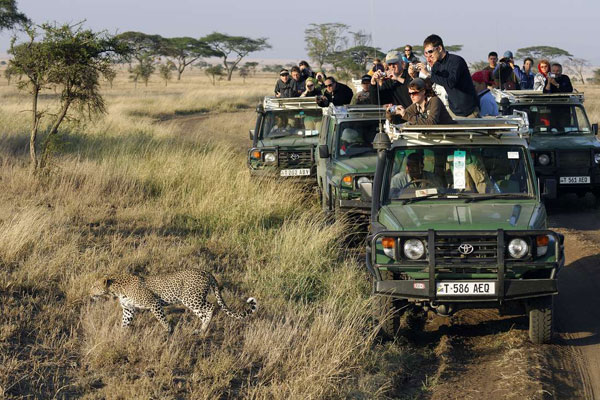
Overall, learning Tourism, Country History, And Culture empower students to become stewards of cultural heritage, ambassadors of cross-cultural understanding, and leaders in sustainable tourism development, driving positive social, economic, and environmental impacts while promoting cultural exchange, heritage preservation, and community well-being.
Medical school (General Medical Studies MD, Dentistry Studies DMD, Nursing Studies DPN, BSN)
Learning in medical school (including General Medical Studies MD, Dentistry Studies DMD, Nursing Studies DPN, BSN) would lead to transformative outcomes in healthcare delivery, patient care, research, entrepreneurship, and community engagement:
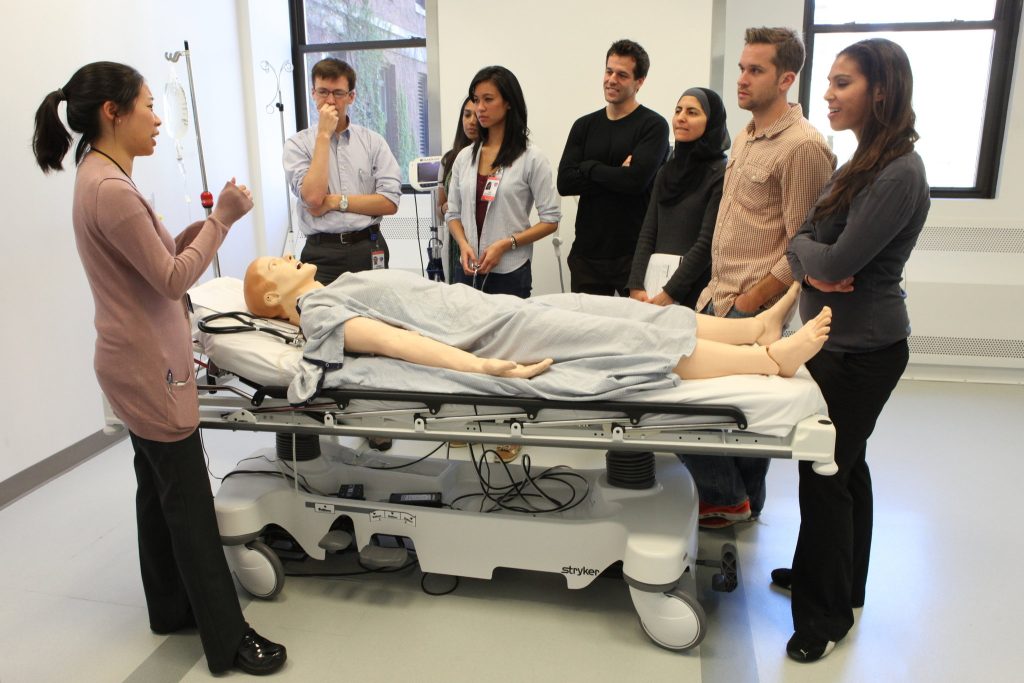
1. Comprehensive Medical Education: Students in medical school would receive comprehensive training in basic medical sciences, clinical skills, patient care, and professional ethics. They would learn about human anatomy, physiology, pathology, pharmacology, microbiology, and other foundational sciences, as well as clinical diagnosis, treatment, and patient management across various medical specialties.
2. Clinical Experience: Learning in medical school would involve hands-on clinical experience in hospital settings, clinics, and community health centers. Students would participate in clinical rotations, clerkships, and internships under the supervision of experienced physicians, dentists, nurses, and healthcare professionals, gaining practical skills, clinical judgment, and bedside manner in real-world healthcare settings.
3. Interdisciplinary Collaboration: Collaboration would be central to learning in medical school, with students working alongside healthcare professionals from different disciplines to provide holistic, patient-centered care. They would collaborate with nurses, pharmacists, physical therapists, social workers, and other allied health professionals to develop comprehensive care plans, coordinate patient care, and optimize healthcare outcomes.
4. Research and Innovation: Students would engage in research and innovation to advance medical knowledge, improve patient care, and address healthcare challenges. They would have opportunities to conduct clinical research, translational research, and basic science research in areas such as disease prevention, treatment, medical devices, pharmaceuticals, and healthcare delivery, contributing to scientific advancements and evidence-based practice in medicine, dentistry, and nursing.
5. Entrepreneurial Ventures: Armed with expertise in medicine, dentistry, or nursing, students would have the opportunity to launch entrepreneurial ventures in the healthcare industry. They could start medical practices, dental clinics, nursing agencies, telehealth platforms, healthcare startups, or medical device companies, leveraging their expertise to create innovative solutions that improve access to healthcare, enhance patient outcomes, and drive healthcare innovation.
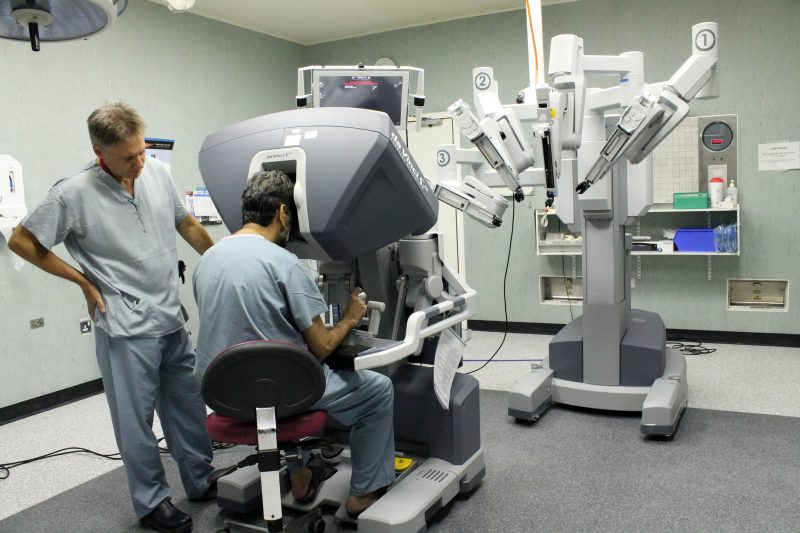
6. Patient Advocacy: Learning in medical school would instill a commitment to patient advocacy, social justice, and healthcare equity. Students would learn to advocate for patients’ rights, access to healthcare services, and equitable healthcare policies, addressing disparities in healthcare access, quality, and outcomes among diverse populations and underserved communities.
7. Community Engagement: Students would engage with communities, patients, and stakeholders to address public health needs, promote health education, and improve health outcomes at the local, national, and global levels. They would participate in community health projects, health screenings, health education campaigns, and public health initiatives that address social determinants of health, reduce health disparities, and empower communities to lead healthier lives.
Overall, learning in Innovya medical school (General Medical Studies MD, Dentistry Studies DMD, Nursing Studies DPN, BSN) empower students to become compassionate, competent, and innovative healthcare professionals, leaders, and advocates, driving advancements in healthcare delivery, patient care, research, and community health while addressing the evolving needs and challenges of the healthcare system.
Management of hotels, maids, cooking, and baking food resources
Learning hotel management, culinary arts, and hospitality services would lead to transformative outcomes in hospitality industry leadership, culinary innovation, entrepreneurship, sustainable resource management, and guest satisfaction:
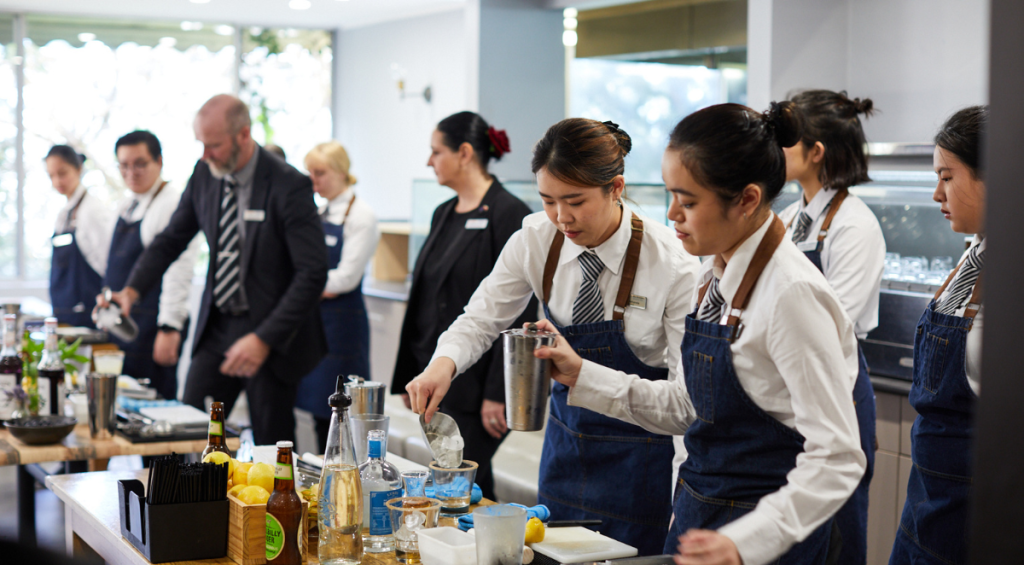
1. Hospitality Management Education: Students would receive comprehensive training in hospitality management, including hotel operations, guest services, event management, revenue management, and business administration. They would learn about hotel organization, front office management, housekeeping, food and beverage operations, human resources, marketing, finance, and strategic management in the hospitality industry.
2. Culinary Arts: Learning in culinary arts school would involve hands-on training in cooking, baking, pastry arts, and culinary techniques. Students would develop culinary skills, creativity, and expertise in preparing a wide range of cuisines, dishes, and baked goods, mastering culinary principles, ingredient selection, recipe development, and food presentation to create memorable dining experiences for guests.
3. Sustainable Resource Management: Students would learn about sustainable practices in hotel management, culinary operations, and food service. They would study sustainable sourcing, food waste reduction, energy efficiency, water conservation, and environmental stewardship to minimize the environmental impact of hospitality operations while promoting sustainability, social responsibility, and corporate citizenship in the hospitality industry.
4. Guest Experience Enhancement: Learning hotel management would emphasize guest satisfaction, service excellence, and guest experience enhancement. Students would develop interpersonal skills, communication skills, and customer service techniques to provide personalized, memorable experiences for guests, exceeding their expectations and building brand loyalty through exceptional service and hospitality.
5. Entrepreneurial Ventures: Armed with expertise in hotel management, culinary arts, and hospitality services school, students would have the opportunity to launch entrepreneurial ventures in the hospitality industry. They could start boutique hotels, bed and breakfasts, catering businesses, restaurants, food trucks, or culinary tourism ventures, leveraging their knowledge and creativity to create unique hospitality experiences and culinary offerings that cater to diverse tastes and preferences.
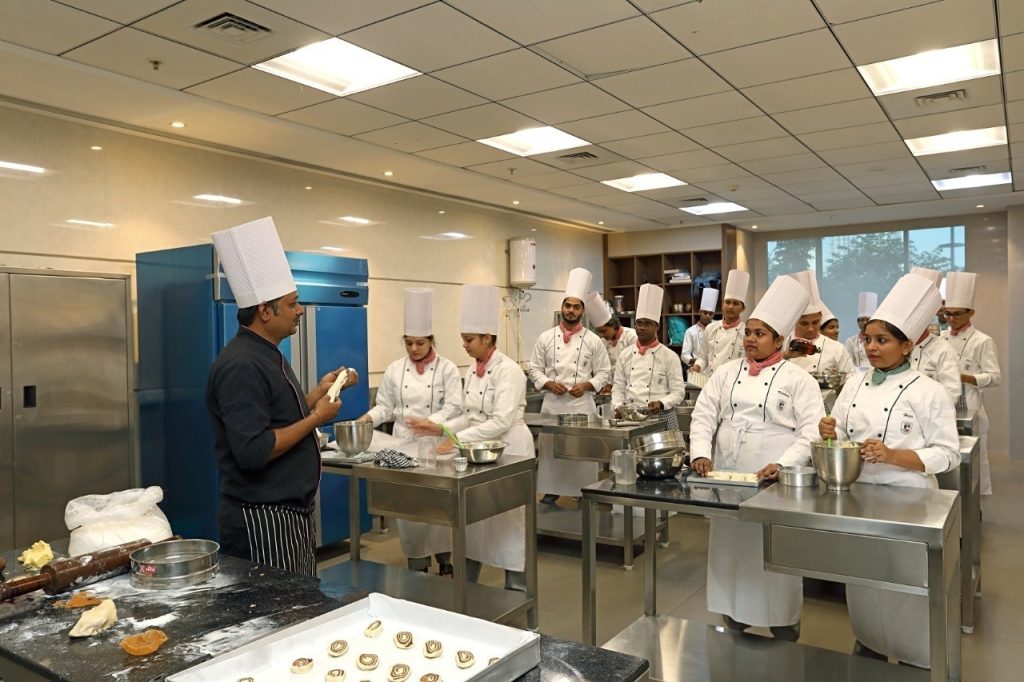
6. Culinary Innovation: Students would engage in culinary innovation and menu development to create innovative dishes, recipes, and culinary concepts that reflect current food trends, cultural influences, dietary preferences, and guest preferences. They would experiment with flavors, ingredients, cooking techniques, and presentation styles to create signature dishes, themed menus, and culinary experiences that delight guests and differentiate their hospitality offerings in the competitive marketplace.
7. Industry Partnerships and Internships: Learning in hotel management and culinary arts school would involve industry partnerships, internships, and experiential learning opportunities that provide students with hands-on experience and exposure to real-world hospitality operations. They would collaborate with industry professionals, chefs, hoteliers, and hospitality leaders to gain practical skills, industry insights, and professional networks that prepare them for successful careers in the hospitality industry.
Artificial intelligence (AI) can significantly enhance the study of hotel management, culinary arts, and hospitality services, by providing innovative solutions, optimizing operations, personalizing experiences, and improving efficiency. Here’s how AI can fit into each study path:
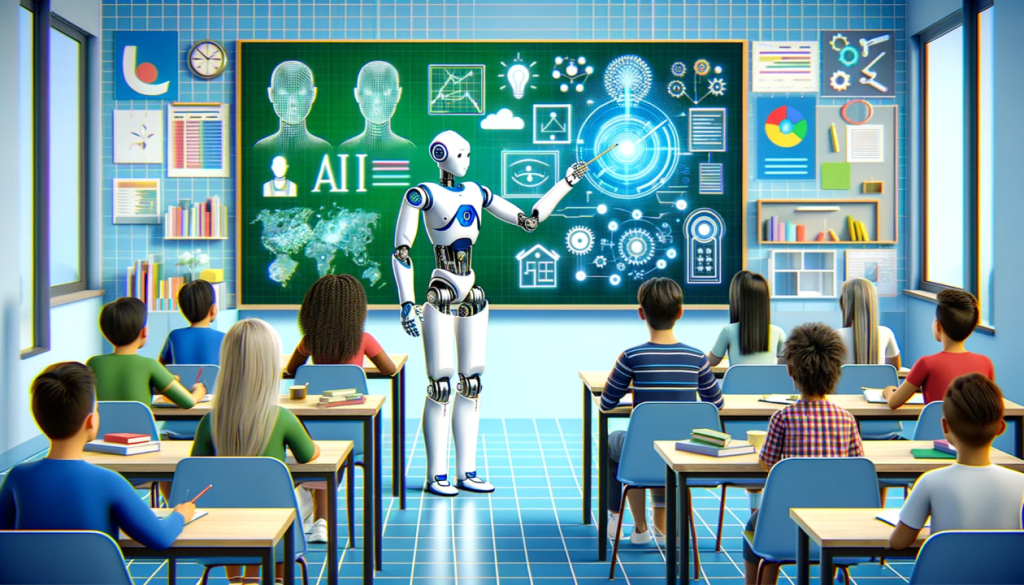
- Hotel Management
- Guest Service Optimization: AI-powered chatbots and virtual assistants can handle guest inquiries, reservations, and requests, providing 24/7 customer support and enhancing the guest experience.
- Revenue Management: AI algorithms can analyze market trends, demand patterns, and competitor pricing to optimize room rates, maximize revenue, and improve hotel profitability.
- Predictive Maintenance: AI-based predictive analytics can monitor equipment performance, detect potential maintenance issues, and schedule preventive maintenance to minimize downtime and reduce operating costs.
- Personalized Recommendations: AI-driven recommendation engines can analyze guest preferences, past behavior, and feedback to provide personalized recommendations for dining options, room upgrades, and local attractions, enhancing guest satisfaction and loyalty.
- Culinary Arts:
- Recipe Development: AI can assist chefs in recipe development by analyzing flavor profiles, ingredient combinations, and cooking techniques to create innovative dishes and culinary experiences.
- Menu Engineering: AI algorithms can analyze sales data, customer preferences, and food costs to optimize menu offerings, pricing strategies, and profitability while balancing taste, nutrition, and presentation.
- Food Quality Assurance: AI-powered image recognition and sensor technology can assess food quality, freshness, and safety by analyzing visual characteristics, detecting contaminants, and monitoring temperature and humidity levels.
- Kitchen Automation: AI-driven kitchen automation systems can streamline food preparation, cooking processes, and inventory management, reducing labor costs, minimizing waste, and improving kitchen efficiency.
- Hospitality Services:
- Personalized Guest Experiences: AI can personalize guest experiences by analyzing guest profiles, preferences, and behavior to tailor services, amenities, and recommendations to individual needs and preferences.
- Predictive Analytics: AI algorithms can analyze guest data, booking patterns, and online reviews to predict guest preferences, satisfaction levels, and future booking behavior, enabling proactive service adjustments and personalized marketing campaigns.
- Operational Efficiency: AI-powered optimization algorithms can streamline housekeeping, maintenance, and service operations by scheduling tasks, allocating resources, and prioritizing activities based on real-time demand and resource availability.
- Sentiment Analysis: AI-driven sentiment analysis tools can monitor online reviews, social media mentions, and guest feedback to gauge guest satisfaction, identify areas for improvement, and respond to guest concerns in real-time, enhancing service quality and reputation management.
Overall, integrating AI into hotel management, culinary arts, and hospitality services can optimize operations, enhance guest experiences, improve decision-making, and drive innovation in the hospitality industry, enabling businesses to stay competitive, adapt to changing market demands, and deliver exceptional service in an increasingly digital and data-driven world. Hotel Management, culinary arts, and hospitality services empower students to become visionary leaders, innovators, and entrepreneurs in the hospitality industry, driving advancements in hospitality management, culinary excellence, guest experience, and sustainable hospitality practices while delivering exceptional service and creating memorable experiences for guests.
AI in every aspect of learning
Artificial intelligence (AI) will be integrated into each of the core studies:
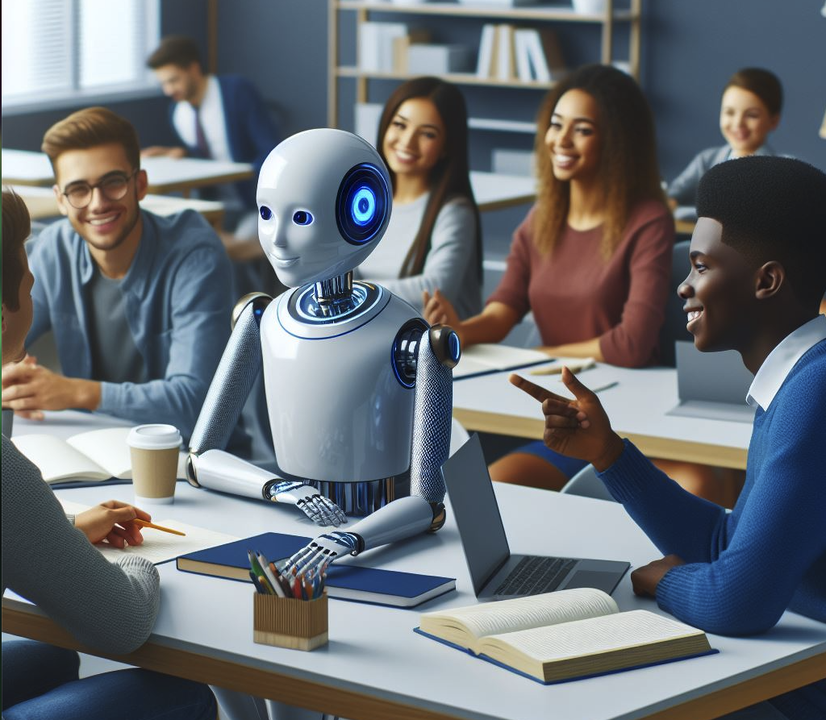
- Medical Studies:
- Diagnostic Assistance: AI-powered diagnostic tools can analyze medical imaging, laboratory results, and patient data to assist healthcare professionals in diagnosing diseases, identifying abnormalities, and predicting treatment outcomes.
- Clinical Decision Support: AI algorithms can provide evidence-based recommendations for treatment plans, medication dosages, and patient management based on clinical guidelines, medical literature, and patient-specific data.
- Healthcare Management: AI can optimize hospital operations, resource allocation, and patient flow by predicting patient admissions, optimizing bed utilization, and scheduling surgical procedures to improve efficiency and reduce waiting times.
- Drug Discovery: AI-driven drug discovery platforms can analyze biological data, molecular structures, and drug interactions to accelerate the identification of novel therapeutics and improve the efficiency of drug development pipelines.
Aviation:
– Flight Planning: AI algorithms can optimize flight routes, fuel consumption, and aircraft scheduling to minimize costs, reduce emissions, and enhance operational efficiency for airlines and aviation companies.
– Maintenance Predictions: AI-powered predictive maintenance systems can monitor aircraft systems, detect anomalies, and predict component failures to schedule maintenance activities proactively, improve aircraft reliability, and reduce downtime.
– Air Traffic Management: AI-based air traffic management systems can optimize airspace utilization, route planning, and traffic flow to enhance safety, capacity, and efficiency in the aviation industry while reducing congestion and delays.
Agriculture:
– Precision Farming: AI-driven precision agriculture technologies can analyze soil data, weather patterns, and crop health metrics to optimize irrigation, fertilization, and pest control practices, improving crop yields, resource efficiency, and sustainability.
– Crop Monitoring: AI-powered drones, satellites, and sensors can monitor crop growth, detect diseases, and assess field conditions to provide real-time insights to farmers, enabling timely interventions and informed decision-making.
– Supply Chain Optimization: AI algorithms can optimize supply chain logistics, inventory management, and distribution networks to minimize waste, reduce costs, and improve efficiency in agricultural production and food distribution.
Alternative Transportation:
– Autonomous Vehicles: AI technologies can enable the development and deployment of autonomous vehicles for transportation, including self-driving cars, trucks, drones, and public transit systems, improving safety, efficiency, and accessibility in urban and rural areas.
– Ride-Sharing Platforms: AI-powered ride-sharing platforms can optimize route planning, driver allocation, and passenger matching to reduce congestion, enhance convenience, and promote sustainable transportation options in cities and communities.
– Traffic Management: AI-based traffic management systems can analyze traffic patterns, predict congestion, and optimize signal timings to improve traffic flow, reduce travel times, and minimize environmental impact in urban areas.
Nursery Houses and Age Research:
– Personalized Care: AI technologies can enable personalized care plans, monitoring, and assistance for elderly individuals living in nursery houses or receiving home care, enhancing their quality of life, independence, and well-being.
– Health Monitoring: AI-powered wearable devices and remote monitoring systems can track vital signs, detect falls, and monitor medication adherence for elderly individuals, providing real-time alerts and support to caregivers and healthcare providers.
– Cognitive Assistance: AI-driven cognitive assistance tools can provide memory aids, reminders, and cognitive exercises for elderly individuals with cognitive impairments, such as dementia or Alzheimer’s disease, promoting cognitive function and maintaining independence.
Water Technology:
– Water Quality Monitoring: AI-powered sensors and monitoring systems can analyze water quality parameters, detect contaminants, and predict water pollution events to ensure safe drinking water, protect aquatic ecosystems, and prevent waterborne diseases.
– Water Conservation: AI algorithms can optimize water usage, leakage detection, and irrigation scheduling in water distribution systems, agricultural irrigation, and industrial processes to conserve water resources, reduce waste, and promote sustainability.
– Desalination and Water Treatment: AI technologies can improve the efficiency and effectiveness of desalination plants, wastewater treatment facilities, and water purification processes, enabling the production of clean water for drinking, agriculture, and industrial use.
Desert and Urban Agriculture:
– Climate Adaptation: AI-driven climate modeling and predictive analytics can assess climate risks, predict extreme weather events, and develop adaptation strategies for desert and urban agriculture, enhancing resilience and sustainability in agricultural production systems.
– Resource Management: AI technologies can optimize resource use, including water, energy, and nutrients, in desert and urban agriculture through precision irrigation, hydroponics, aquaponics, and vertical farming techniques, maximizing yields and minimizing environmental impact.
– Crop Selection and Management: AI algorithms can recommend suitable crop varieties, planting schedules, and cultivation practices for desert and urban environments based on soil conditions, climate data, and market demand, improving agricultural productivity and profitability.
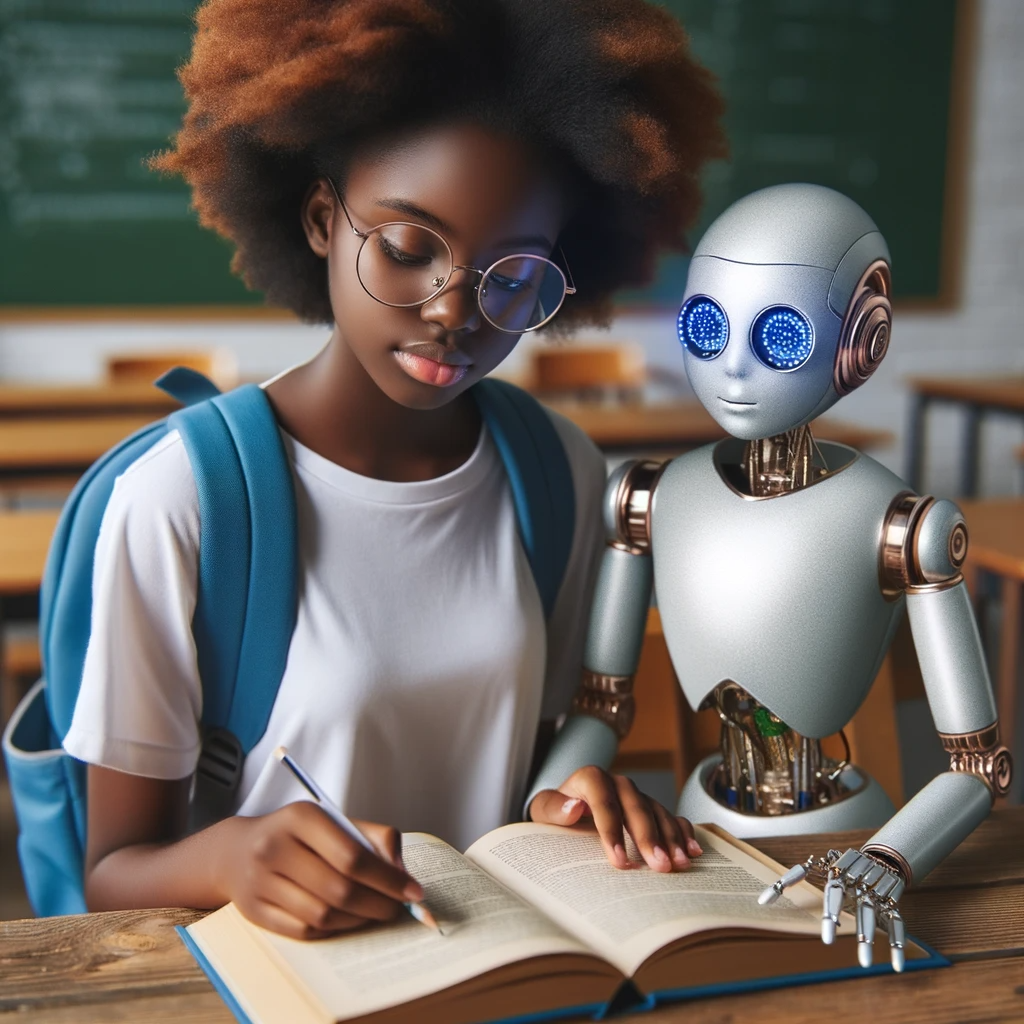
In summary, Artificial Intelligence in every core learning can revolutionize various fields of study by providing advanced data analysis, prediction, automation, and decision-making capabilities, ultimately enhancing efficiency, sustainability, and innovation across diverse industries and applications.
